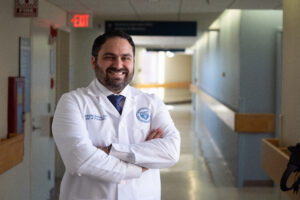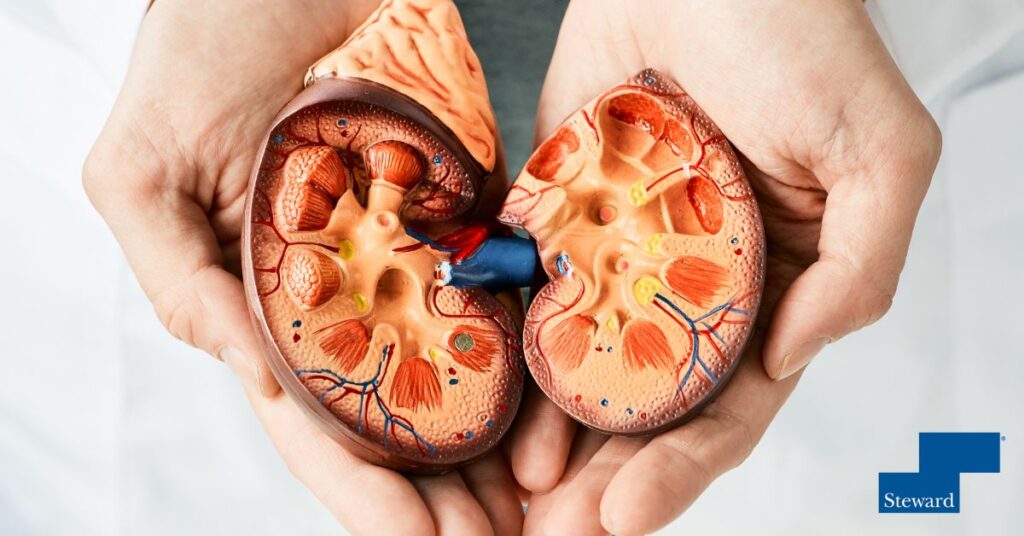As we head into the winter season and the days grow colder and shorter, some of us may experience some form of the “winter blues” at some point. For around 5 percent of Americans each year, these symptoms are actually indicative of seasonal affective disorder, or SAD. In recognition of SAD Awareness Month, we sat down with Leonardo Batista, MD, Chair of Psychiatry at Morton Hospital, to discuss what SAD is, its symptoms, how to prevent and treat it, and how to support yourself and your loved ones who may be suffering from SAD during the fall and winter months.
What is Seasonal Affective Disorder?
“Seasonal affective disorder is recurrent episodes of mood changes such as depression that typically occur during the same time each year and may last for four to five months,” said Dr. Batista. “It is more common in late fall or early winter and tends to go away with the arrival of the sunnier days of spring and summer.”
Dr. Batista explained that a lack of sunlight triggers lower serotonin activity and increases melatonin production, which causes sleepiness and decreased energy.
Some people’s circadian rhythm, which is the internal 24-hour clock that synchronizes with the changes in light and darkness that occur daily and throughout each of the seasons, may be timed differently. This makes it more difficult for their bodies to adjust to the differences in sunlight exposure, which can lead to SAD.
What are its symptoms?
Dr. Batista explained that many of the symptoms of SAD are very similar to those of depression, including:
- Loss of motivation and interest in activities that you once enjoyed;
- Low energy, sluggishness;
- Changes in appetite;
- Difficulty concentrating;
- Hopelessness, worthlessness, feelings of guilt; and
- Frequent thoughts of death or suicide.
However, some of these symptoms often take shape differently in patients with SAD. For example, those with SAD more commonly experience oversleeping as opposed to a lack of sleep or insomnia. Those with SAD are also more likely to experience an increase in appetite and specifically crave carbs, leading to weight gain. In return, this further contributes to a decrease in energy. SAD also more frequently manifests as social withdrawal, almost akin to hibernation.
Who is most at risk?
“People in northern latitudes, people with a history of depression or another mood disorder, and people who tend to exercise less or have a less healthy diet are more susceptible to SAD,” said Dr. Batista.
People can prevent SAD by gaining more sun exposure, especially in the morning, to help regulate normal levels of vitamin D. It is also important to exercise regularly and follow a healthy lifestyle and diet to both prevent and treat SAD.
When should you seek help?
While the most common symptoms include a general overall sadness or a diminished amount of energy, Dr. Batista explained that there is a safety threshold where if symptoms “escalate to feelings of worthlessness or hopelessness, a lack of motivation that impacts your ability to function, and more importantly, thoughts of death or suicide, those are signs that the person needs to seek help.”
How is SAD treated?
“The best treatments include psychotherapy and a mix of antidepressants, lifestyle changes, vitamin D supplements, and phototherapy,” advised Dr. Batista.
Phototherapy is the daily use of a light box for about thirty minutes in the mornings that simulates bright morning light to aid a person’s circadian rhythm. When natural sunlight is insufficient due to shorter daylight hours, Dr. Batista said that someone can sit about 16–24 inches away from a light box while having their breakfast or morning coffee and let the light indirectly shine on their face and eyes. He noted that the ideal intensity of the light box should be around 10,000 lux.
How can someone support a loved one suffering from SAD?
It is very important that families and caregivers pay close attention, as sometimes those suffering from SAD are less motivated to seek help on their own.
“Just like anyone struggling with depression, you want to ensure that they’re safe, that they feel safe, and that they’re behaving in a safe way,” advised Dr. Batista.
Dr. Batista further noted that “direct support is often most effective due to the lack of motivation and self-worth that SAD can cause.” He recommended hands-on assistance, such as calling a doctor together or actually going with the person to see a psychotherapist or counselor.
What are common misconceptions about SAD?
Some believe that SAD is the body’s natural response during the winter and equate the disorder with the “winter blues.” While many people do feel generally down during the winter months, Dr. Batista pointed out that SAD is different due to the toll that it takes on a person’s ability to function as well as the consistency of the symptoms. Those suffering from SAD likely have symptoms that last nearly all day and every day for weeks, possibly months. This is indicative of a more severe mood disorder than simply the winter blues.
What do you wish more people knew about SAD?
“It’s important for us to be extra aware of changes in mood, level of functioning, level of energy, loss of interest and motivation, and, most importantly, unsafe thoughts,” said Dr. Batista.
Even when SAD takes its toll, Dr. Batista wants people to remember that “we have that flame inside of us that still wants to recover, and sometimes we just need the right direction and support.” He ended with a line from a poem from the poet and French philosopher Albert Camus that reads: “In the midst of winter, I found there was, within me, an invincible summer. And that makes me happy.”

Leonardo Batista, MD, DDS, FAPA, serves as the Chair of Psychiatry and Behavioral Health at Morton Hospital. Dr. Batista was instrumental in opening Morton Hospital’s first-ever Outpatient Psychiatry Clinic in 2020, and since has helped to grow the hospital’s Psychiatry and Behavioral Health team and services, including introducing an Electroconvulsive Therapy (ECT) Program. Dr. Batista trained at Brown University and Harvard Medical School and has a special interest in general adult psychiatry, neuropsychiatry and cultural psychiatry.
To find a doctor or schedule an appointment, visit Steward DoctorFinder™.




